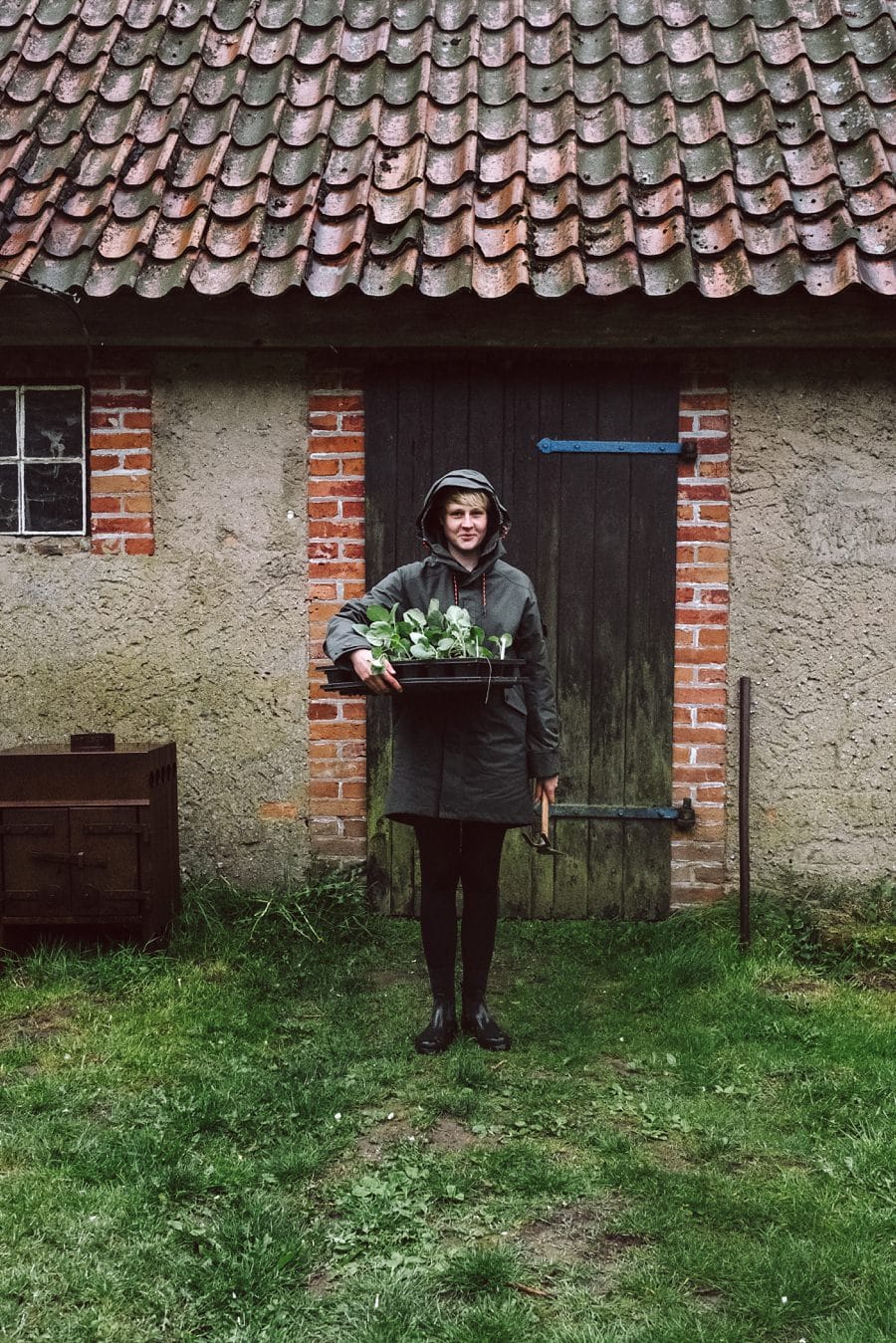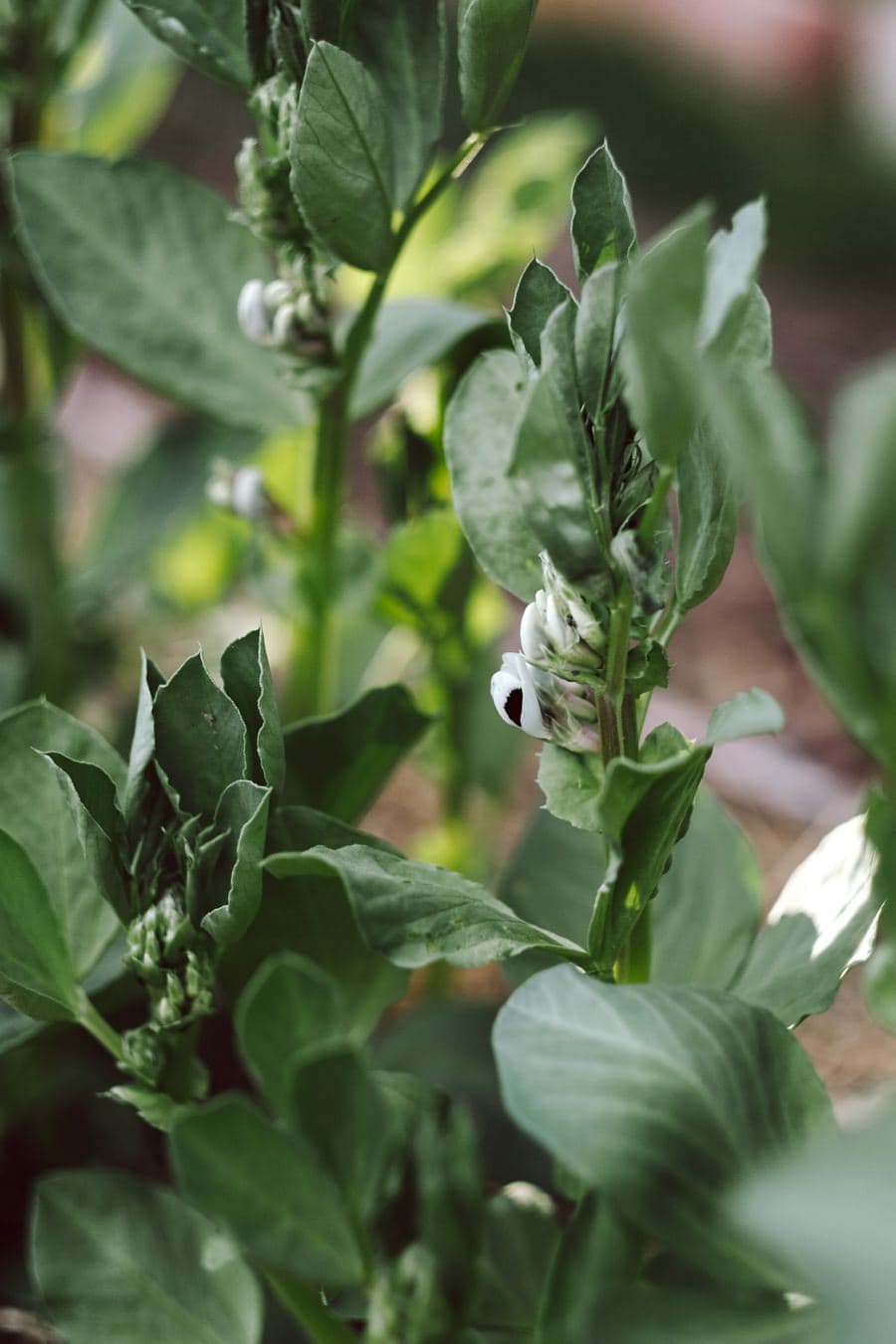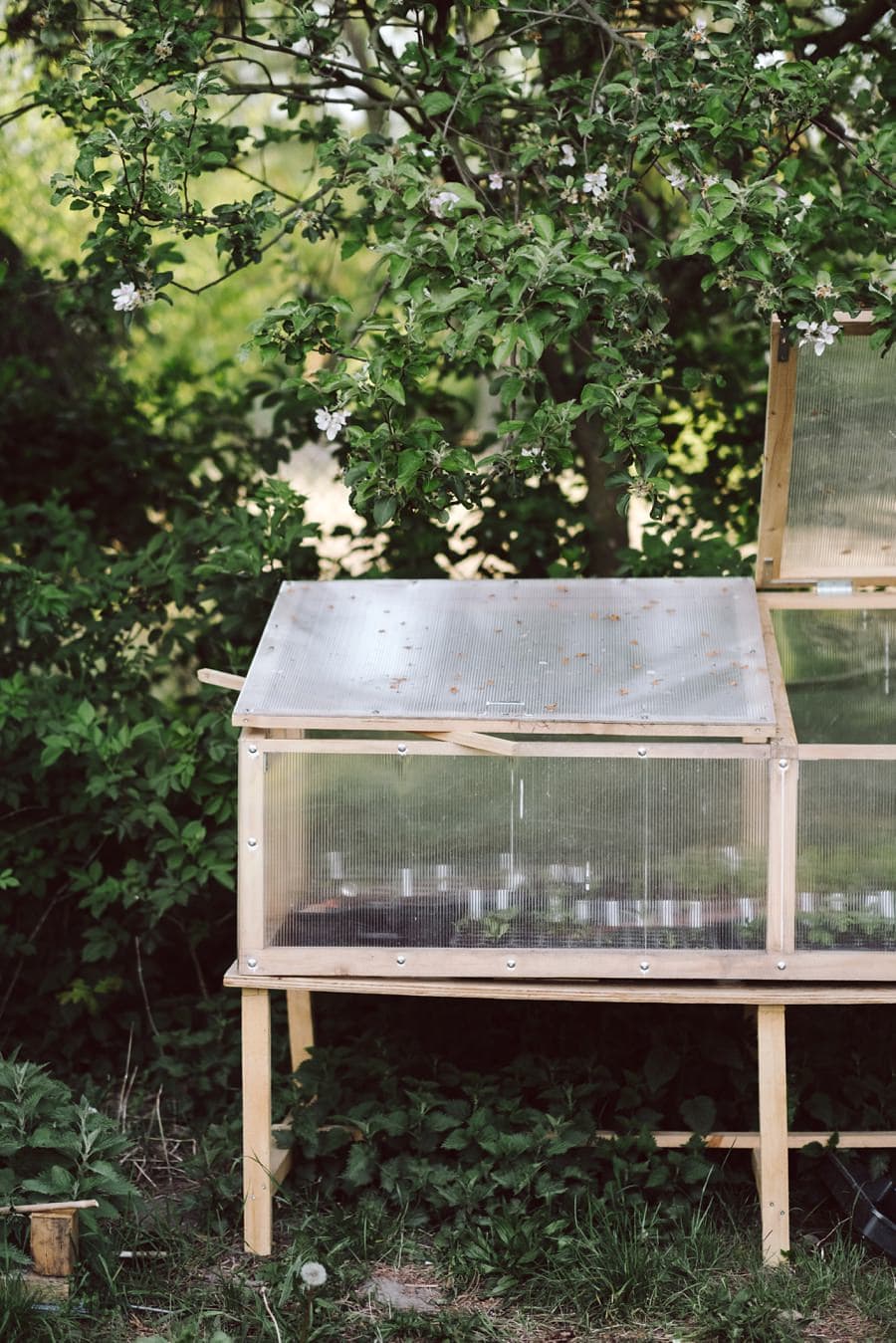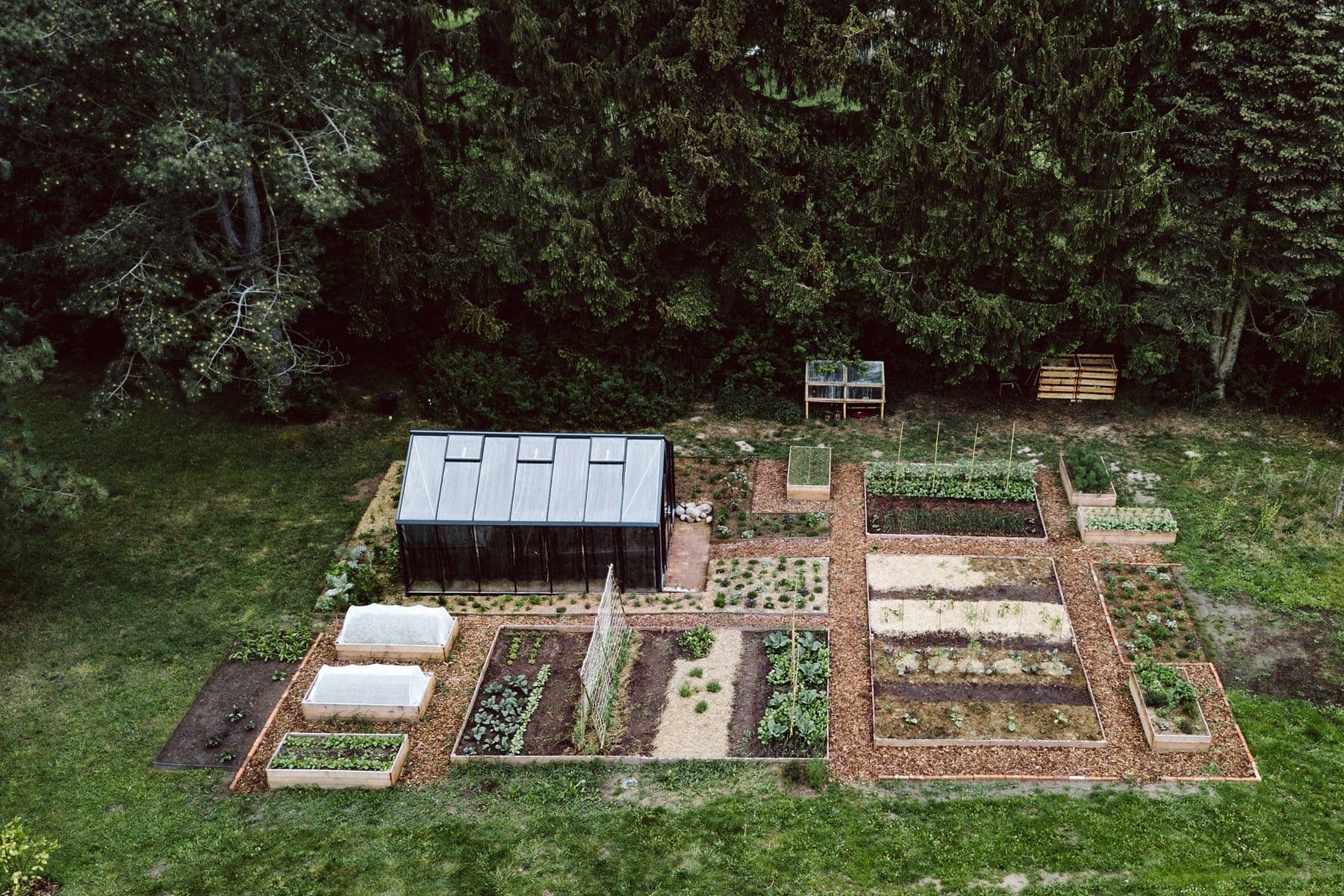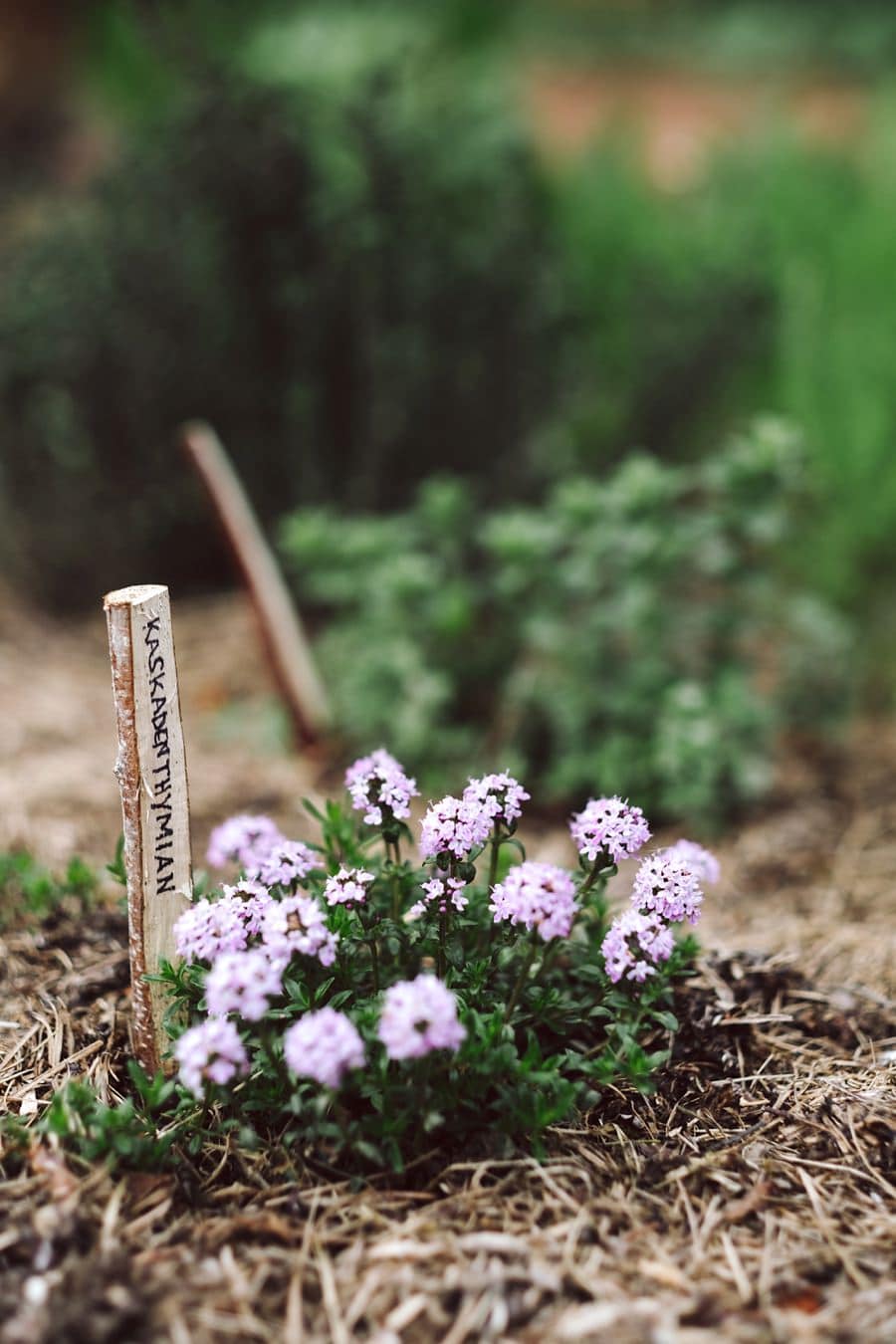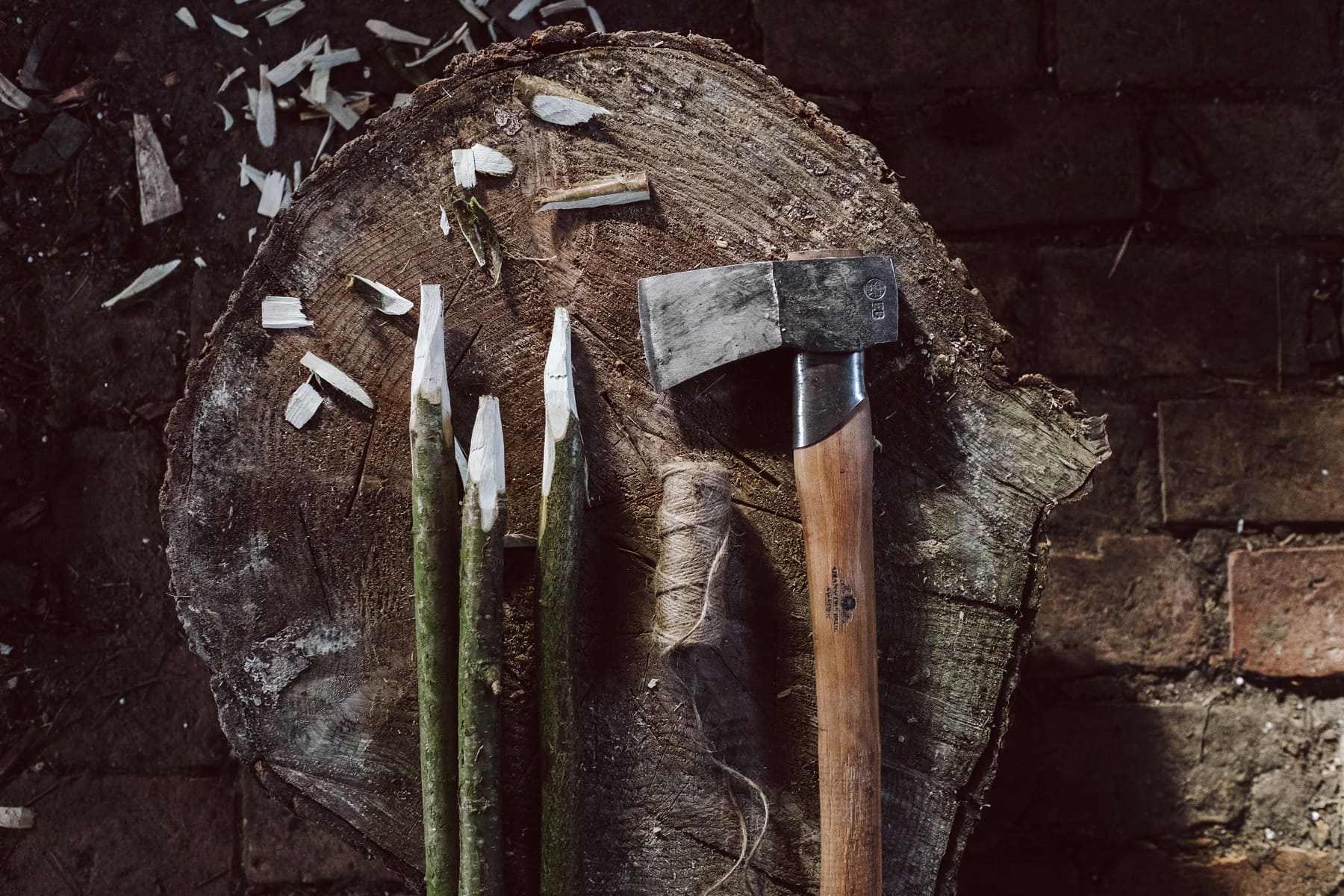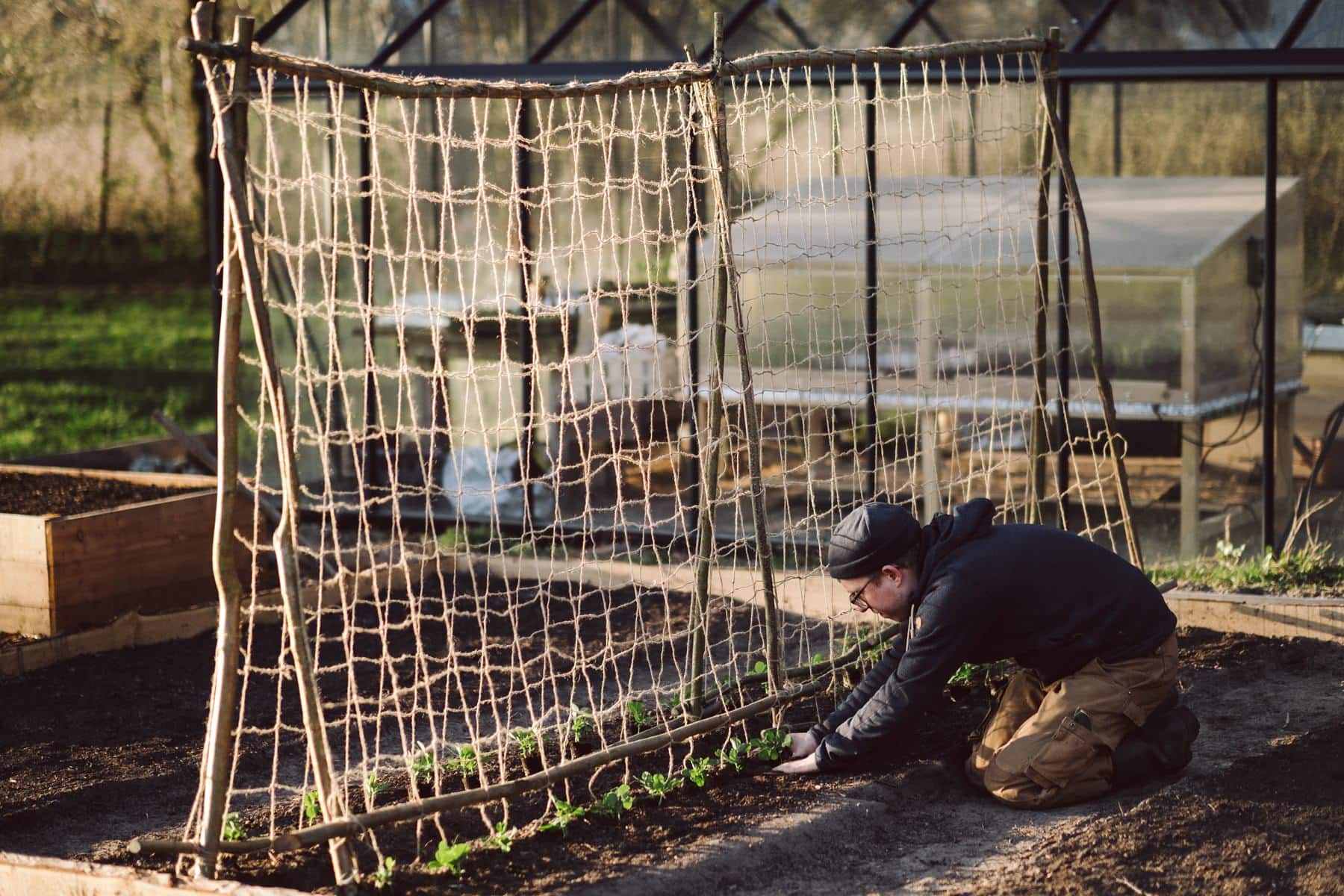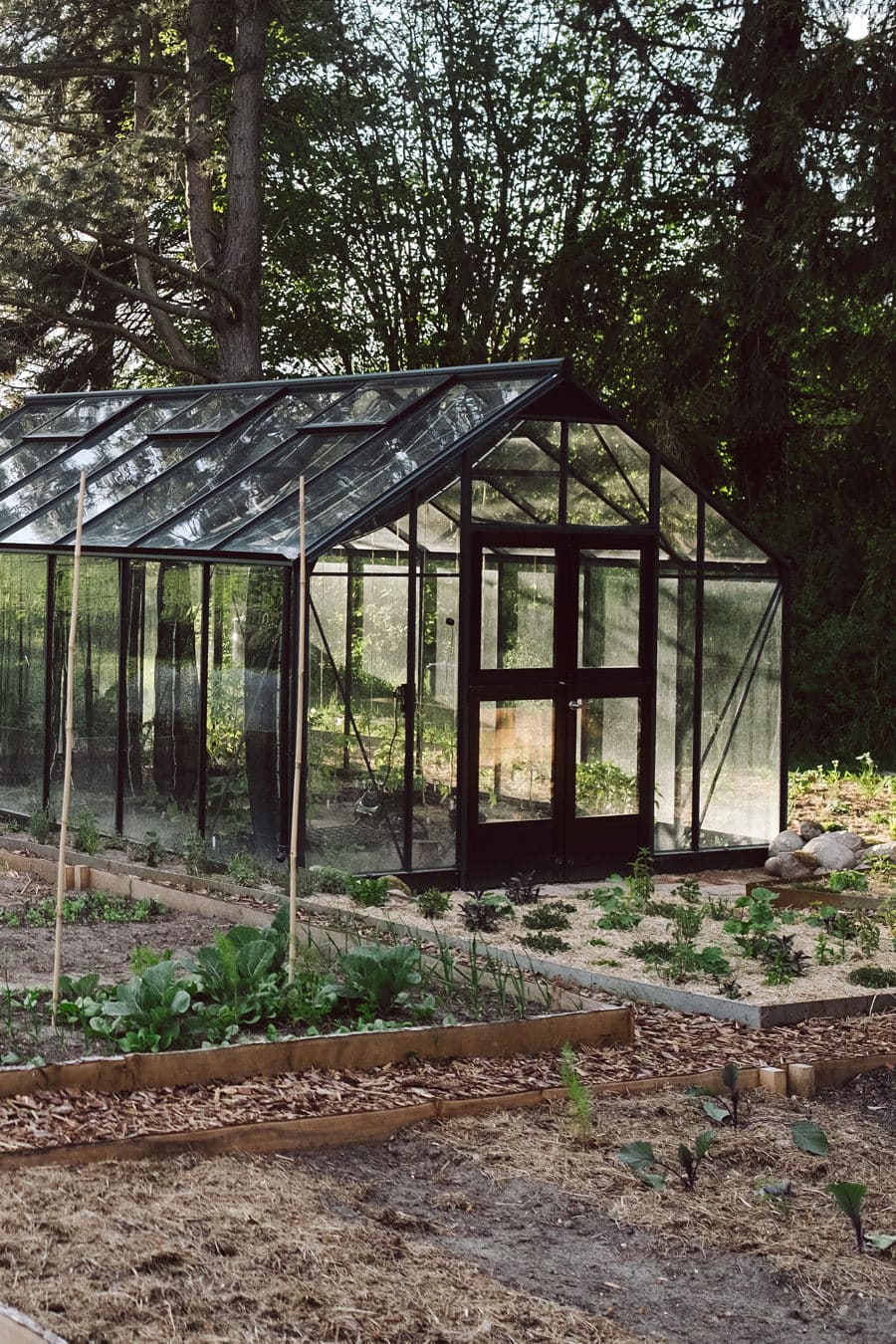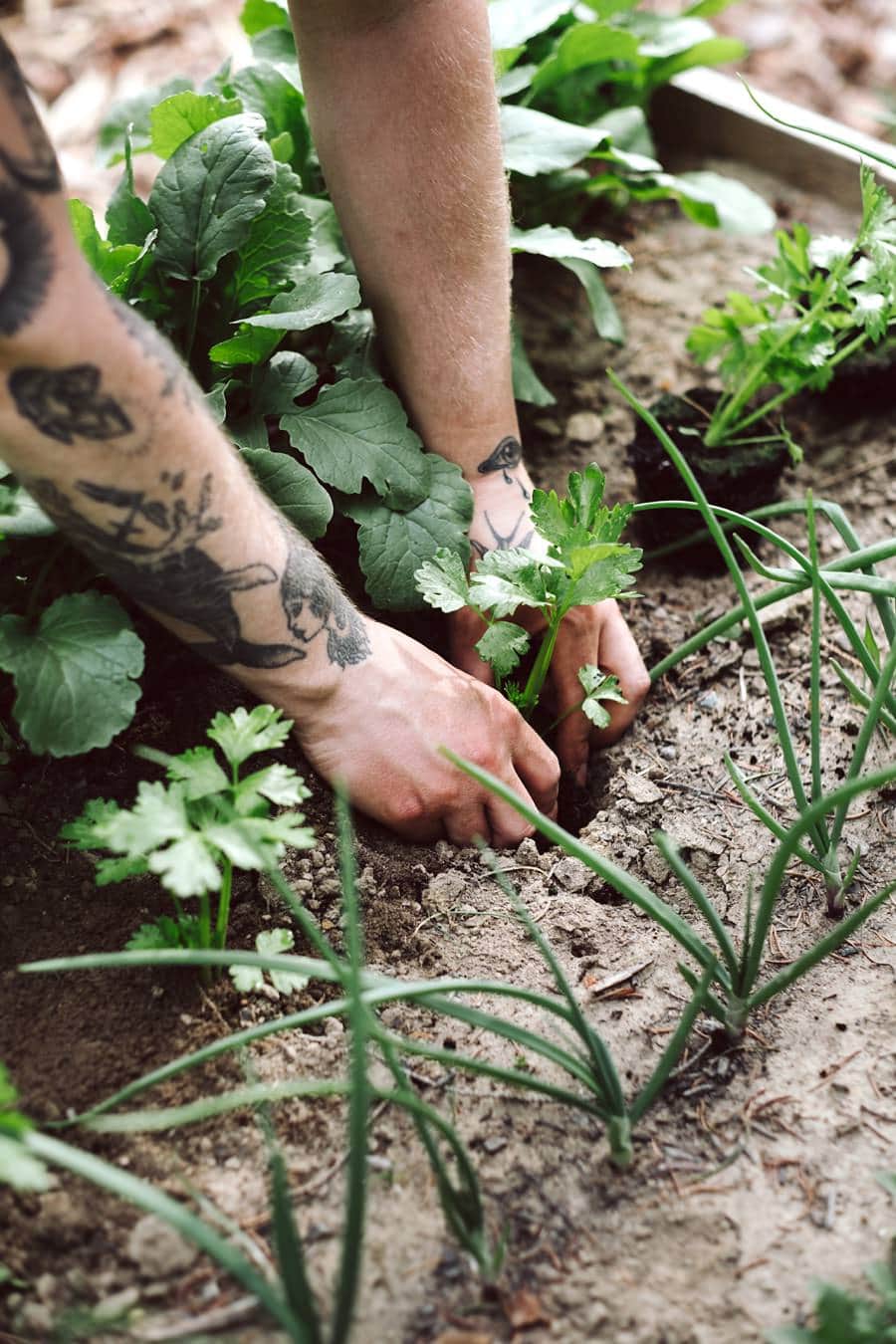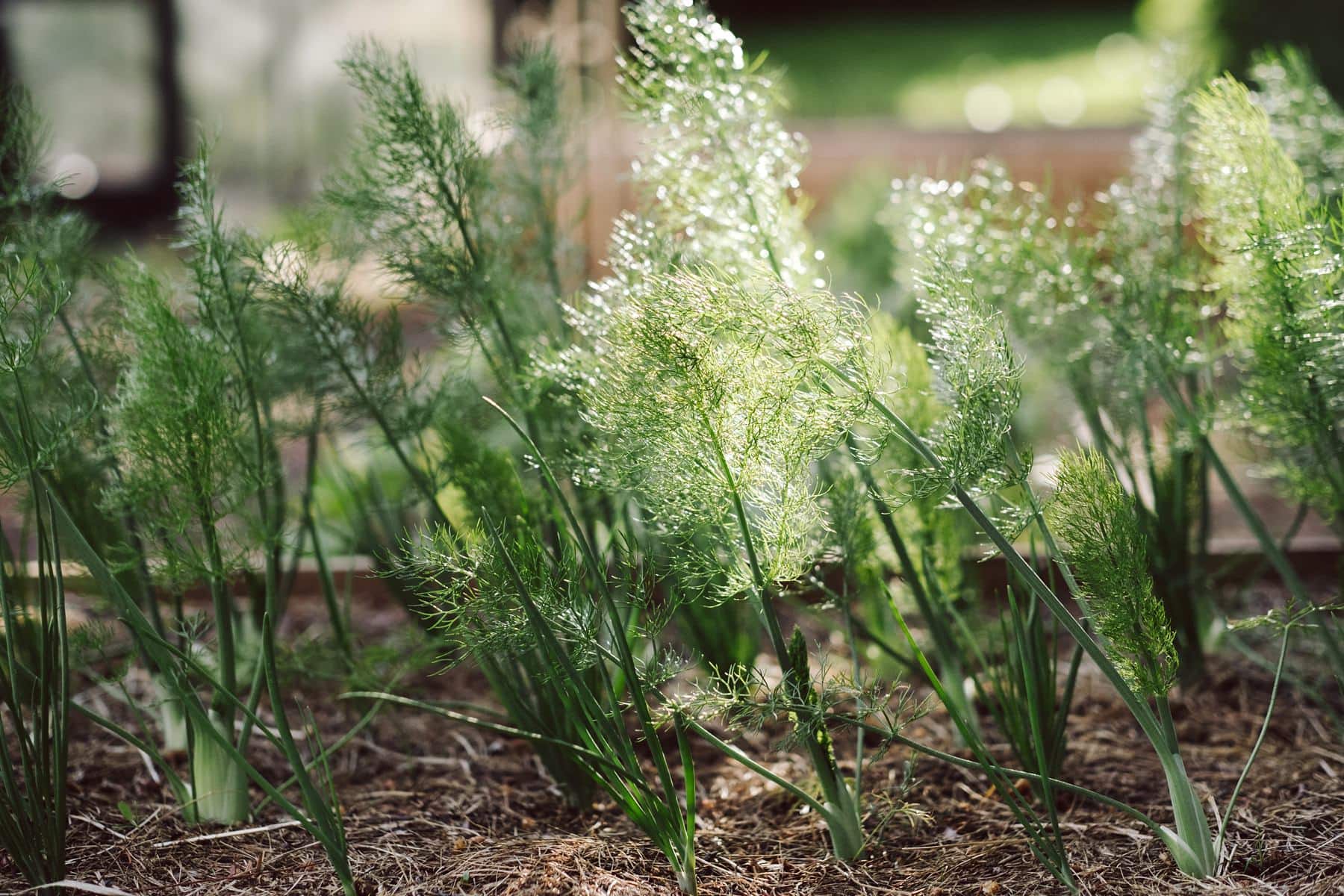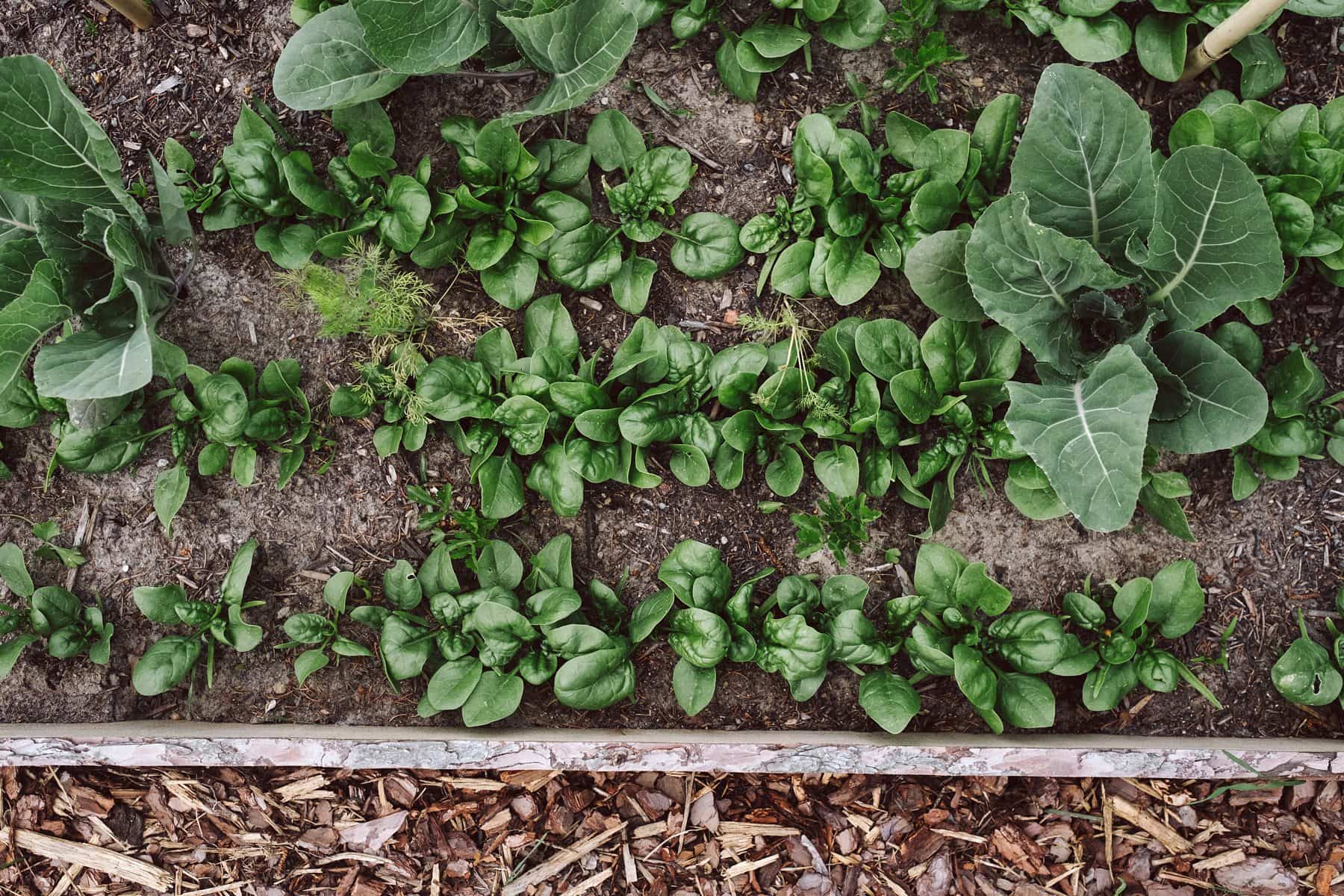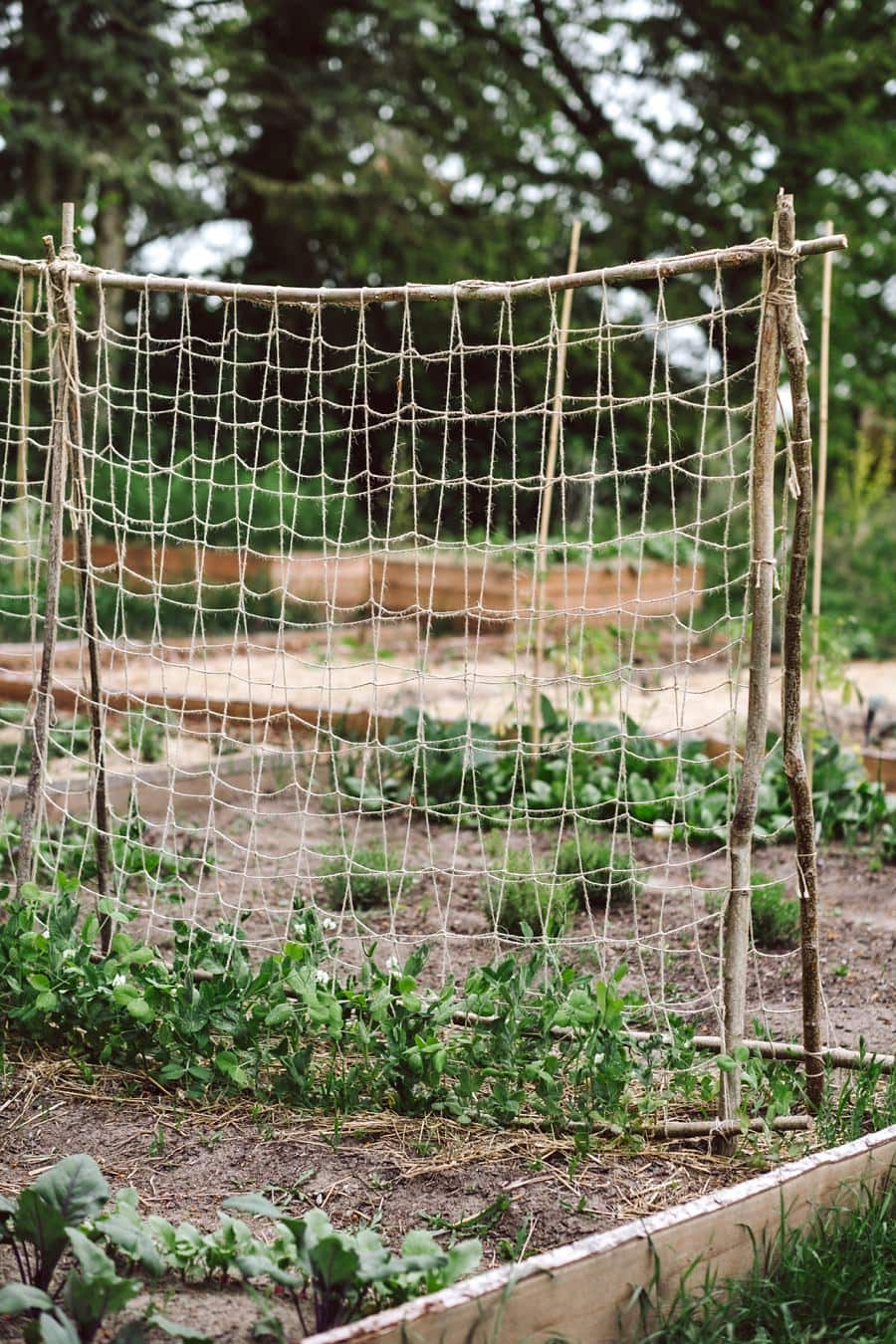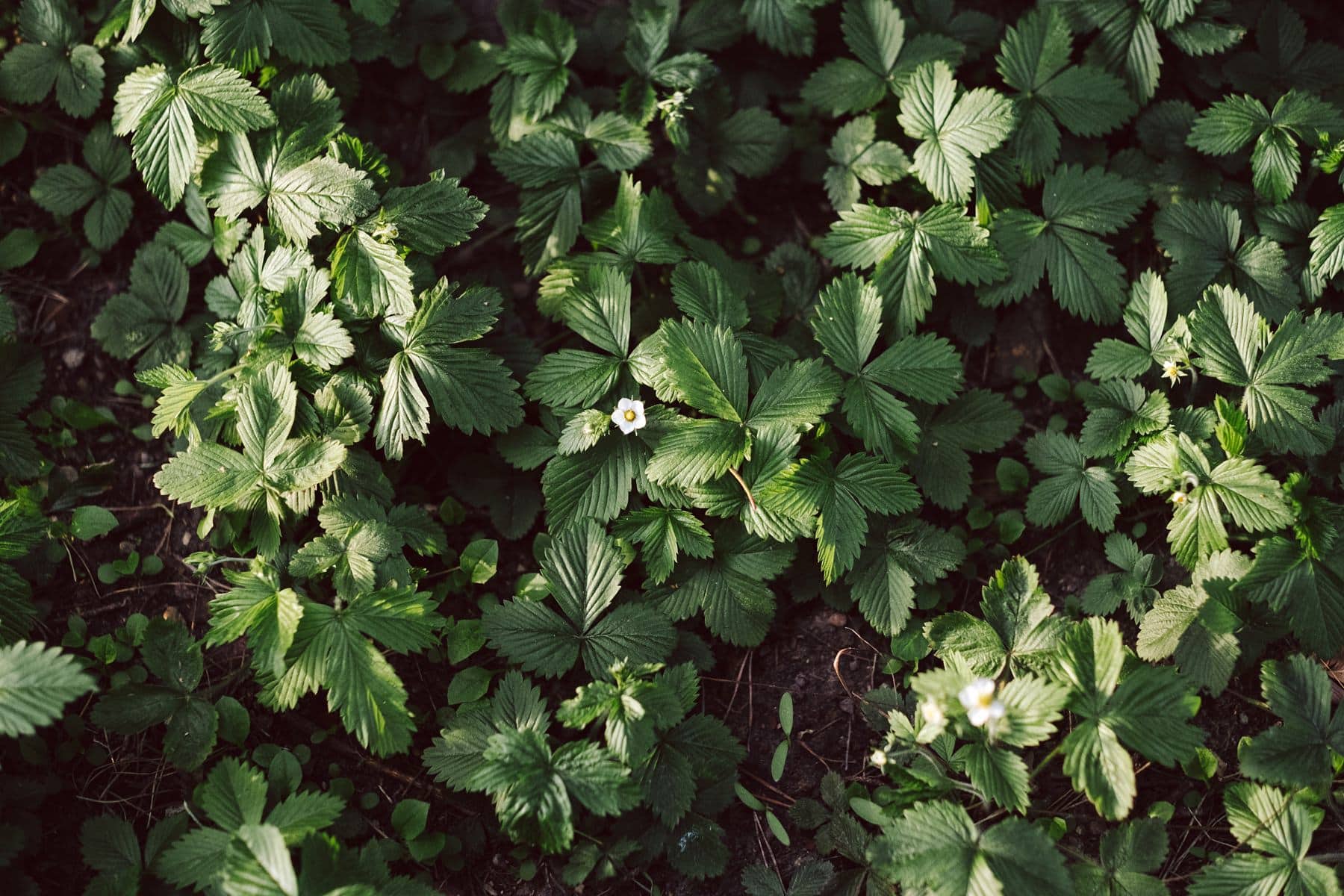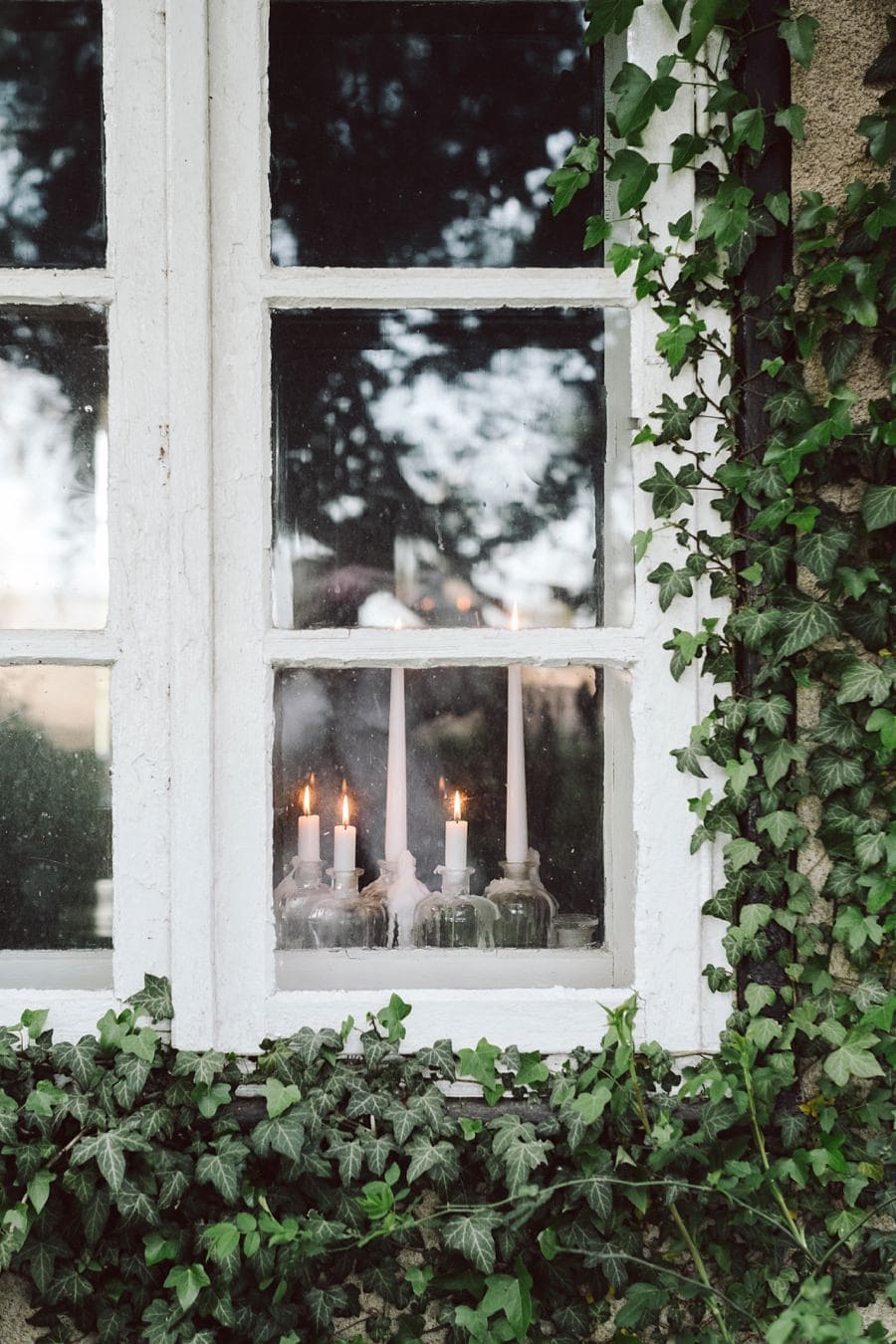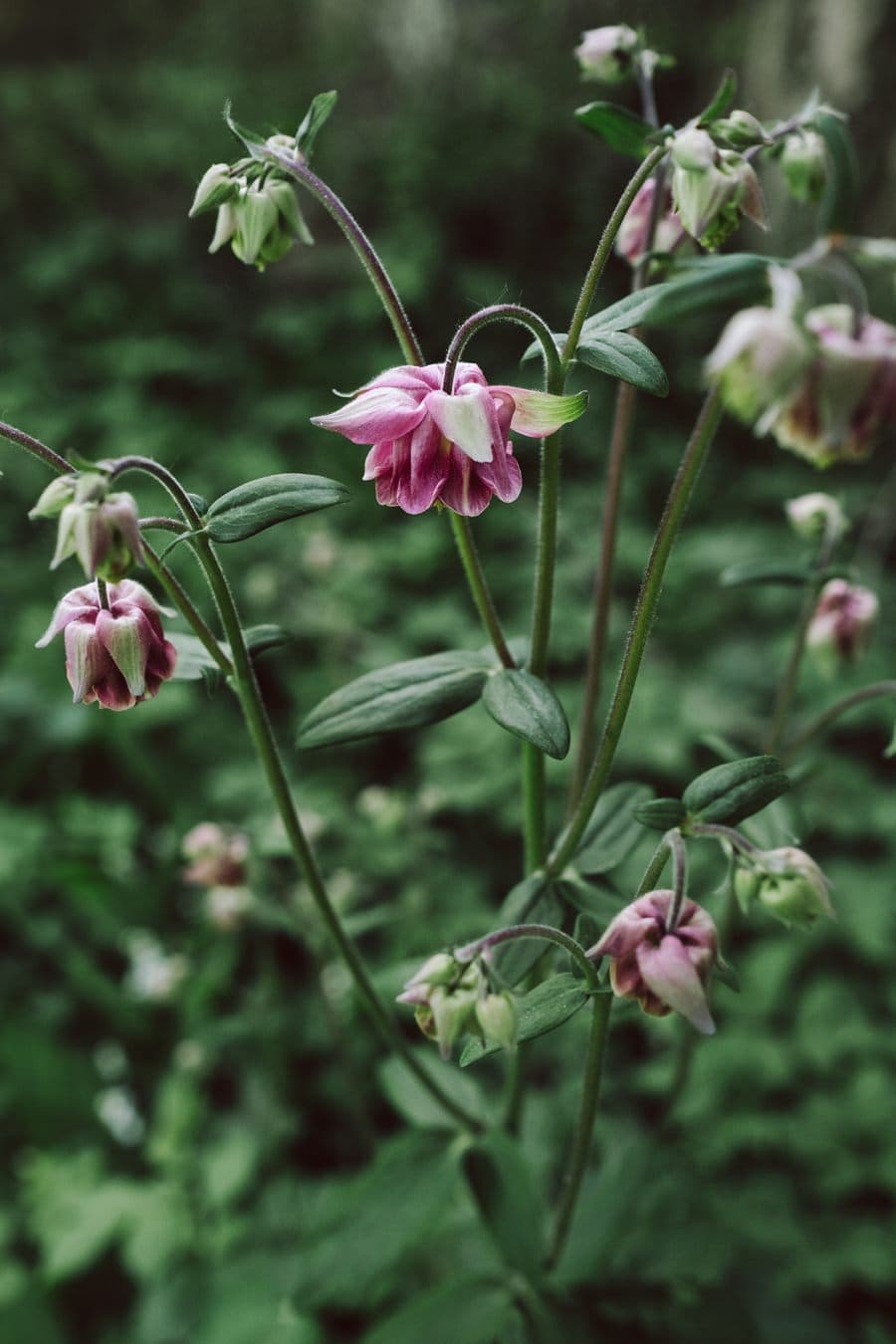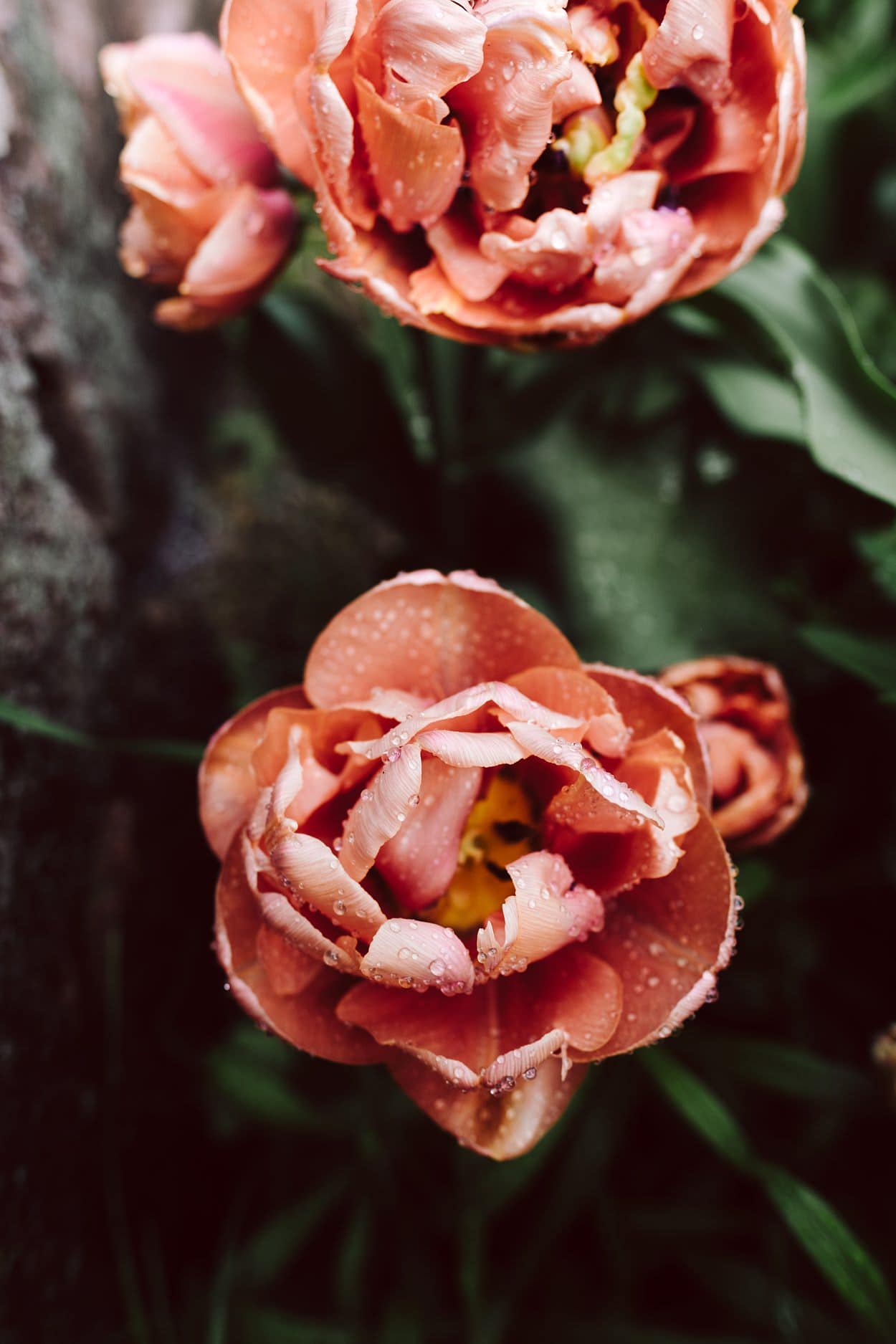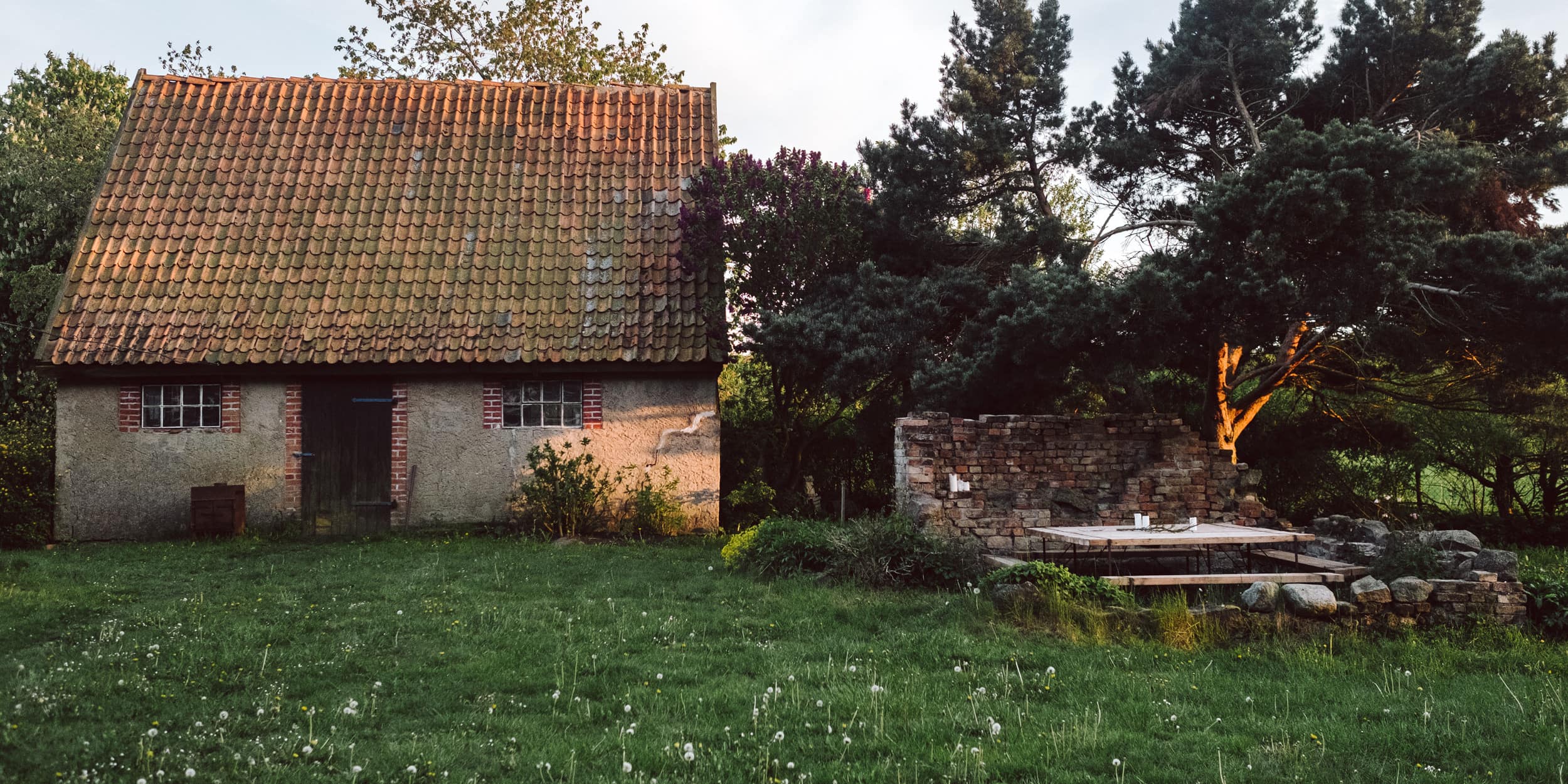
Instead of biodiversity the bees only find monocultures. We can see the beauty in the rich yellow rape fields. However, this is barely nature, actually, they even add to the environmental destruction. Don’t even get us started on gen technology, chemical fertilizers and pesticides. In our little cosmos, we want to do things differently. We want to see ourselves what it means to enrich nature with our possibilities instead of just exploiting it. Sometimes, that’s not easy. Especially, since we need to gather experience and knowledge to act and live sustainable.
Maybe you remember our first thoughts, over a year ago, concerning our kitchen garden. We had the idea, inspired by books on permaculture, to give every plant the perfect spot on our 3.000m² and create little habitats in which flora and fauna could grow in accordance with and enrich each other. However, already last year we decided on a more classic cottage garden. Clear geometrical structures not only help us with the cultivation but also with the care for and harvest of our vegetables. Of course, we did not tally the idea of permaculture completely. We actually see it more as a philosophy rather than a concrete way of gardening. We want to follow the core idea of this philosophy: with nature, not against it. In a close-to-nature cottage garden a lot of permacultural aspects are important, anyway. Natural cycles can also have structured forms. For us, a deliberate crop rotation and intercropping are part of it as well as a thick layer of mulch made of grass on the patches, the preparing of natural resources as muck, broths, and teas. This just as a quick note, since we wrote about that somewhen else already.
Working with nature also means to provide space for useful creatures. Before we finally find the time to rest in a hammock in our garden, we probably build another house for wild bees, pile stones and wood for hedgehogs, insects, small reptiles and amphibians. Maybe it’s just a drop in the bucket. We can’t stop the drastic changes of our world. But maybe we can inspire one or another to act like us and to discover the fascination for nature’s routines.
It’s the end of May already and finally, everything in our garden comes together. Since our last report a lot happened. The patches are all encircled and ready for planting. While preparing we encountered a few surprises which cost us hours, ah, days of work. Not to mention our nerves. But we want to spare you from the horrific details and us from the memories. It is way nicer to talk about the most plants being planted and growing great. Diverse herbs, fennel, radishes and spinach were already harvested galore. Peas are twining up the climbing support, and bit by bit the late vegetable kinds are planted. This year, we have over 150 different varieties. 12 different kinds tomatoes alone, and 8 varieties of potatoes. We especially stressed on rare heirloom vegetables. Ideally, the seeds are regional. This way, the plants are adapted perfectly for the climate in Mecklenburg.
Beside the many kinds of vegetables, we also planted a lot of edible perennials on over 40m² around our green house. The count 360 plants, including varieties like adder’s wort, daylilly, echinacea, lavender, anis hyssop, mallow, bluebell, lady’s mantle, sweet cicely, common violet, horned pansy, just to name a few. The perennials are well-matched so we have edible flowers, petals and seeds all year round. With their different leaves and heights the plants not only add to a beautiful scenery, they also go well with their neighbours. They will be a great addition to our cuisine, but also have an effect on our garden. The perennials won’t be planned and planted new every year, unlike our vegetable patches, but are planned for years, thus showing their splendour every year again. The shifted and thus long blooming time will not only bring us joy, but also to the many wild bees we see here again and again. In Germany, there are over 500 different types of wild bees. Crazy, right? However, as you might know, a lot of them are endangered or even at the brink of extinction already. This is mainly due to the specific plants the bees specialised on to feed. Most bees are also specialised on their nesting place and need special building material and other details, which disappear more and more.
